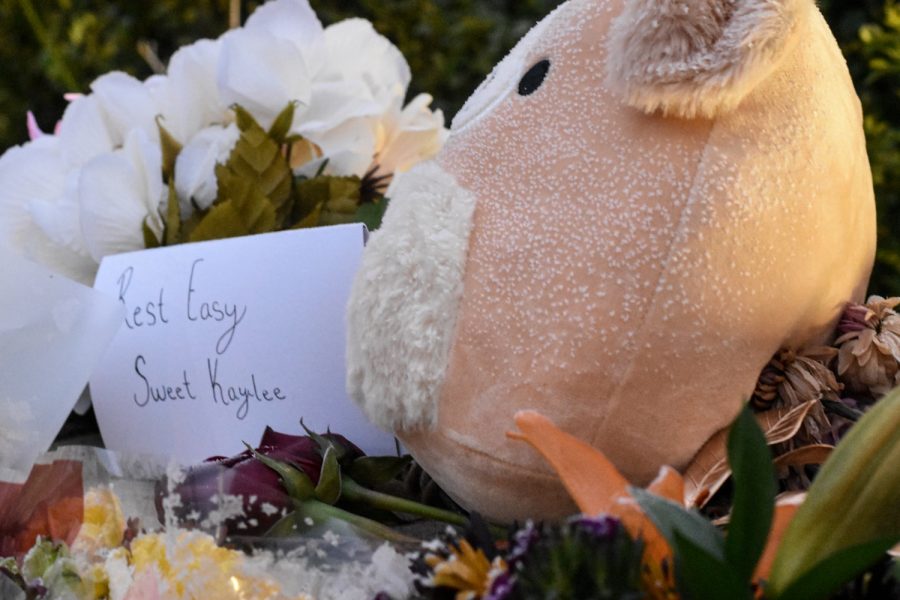OPINION: The homicides in Moscow are not about you
Police incompetence breeds rumors, damages investigation
Community members leave notes and gifts to remember the four students murdered at Univeristy of Idaho, Nov. 16
December 1, 2022
It truly seems that the popularity of true crime content has rotted the brains of the general public.
I have written about true crime before and will not pretend to be exempt from its pull. There is a certain feeling of exhilarating unease about those real-life horrors that fiction simply cannot replicate.
For the residents of Moscow and Pullman, this feeling was doubled with the tragic murders of four University of Idaho students on Nov. 13.
This case has been frustrating in every imaginable way; the confusing pieces of evidence and local police keeping people in the dark about what little evidence they do have has made this a scary time to be on the Palouse.
The police have no suspects and no murder weapon — in fact, if they have anything of substance at all (which I suspect they do not, based on the ridiculous press conferences we have been greeted with the past few weeks), they are keeping it to themselves.
They did say they believe it was a targeted attack and there is no threat to the community, and although they later rescinded that, I have no idea what gives them authority to make those claims when they have no suspects or motives.
The information they have shared with the public often contradicts itself, based on who is giving it and what news outlet they are speaking with, according to a Moscow-Pullman Daily News editorial.
Considering the law enforcement public relations nightmare, I cannot blame the public for the blizzard of rumors and panic swirling around the Palouse.
I can blame true crime culture for making the public think they can do the investigating themselves.
According to the Daily Evergreen, misinformation is running rampant on social media apps like Yik Yak, Twitter and TikTok. In the article, one student said she saw someone covering the case on Twitter tweet about the surviving roommates in the house where the murder occurred, then quickly delete it due to misinformation.
Although the student said the Twitter user issued a follow-up message about transparency and taking accountability for misinformation, the problem is that it went out in the first place.
Screenshots of deleted tweets resurface all the time without context or follow-ups attached and can wreak havoc in far less dire circumstances than a quadruple murder.
It is misinformation like this that probably led one Daily News reader to comment on a recent article, “I believe the surviving roommates are responsible. Inside job.”
Imagine the trauma the surviving roommates are going through after having found such a grisly scene in their own home — then imagine how it feels to have the knife twisted as people online speculate about their possible involvement.
Another reader on the same article commented, “What likely happened is that one or more of these students was involved in the occult and somehow a malevolent being from another dimension manifested itself and slew these students.”
Imagine how it would feel to read something like that as a family member of one of the victims.
Other commenters and social media users devote their time to criticizing the investigation and the people reporting on it. I guess that is preferable to making up rumors about the victims, but I would just like to know how they think they are helping.
I do not know what exactly to say about it from here. How is this editorial helping? It is not furthering the investigation or providing any sort of comfort to the families and friends who have been most affected.
These murders were a tragedy; the public appearance of the investigation is another tragedy — the sickening rumors and speculation across the web are the nails in the coffin.
I will not pretend to have all the answers, and neither should anyone else. Instead, let’s work toward holding local investigators accountable for handling the investigation appropriately and protecting the public, instead of trying to be heroes and make the UI homicides all about ourselves.










